I don’t know why people don’t do home canning as much anymore. You know, like our grandparents did.
For the same reason that people don’t change their own oil or fix their own cars.
Oh, why?
Tools.
I love tools. I like the feel of a solid combination wrench. If you get up into the 18, 19 or 24mm range, there’s a heft to the wrench that just feels solid. I’m guessing you don’t own a 24mm combination wrench. I didn’t for a long time. I finally bought one because it fit the drive shaft bolt on my 96 Lexus. I was tired of not having the right sized wrench.
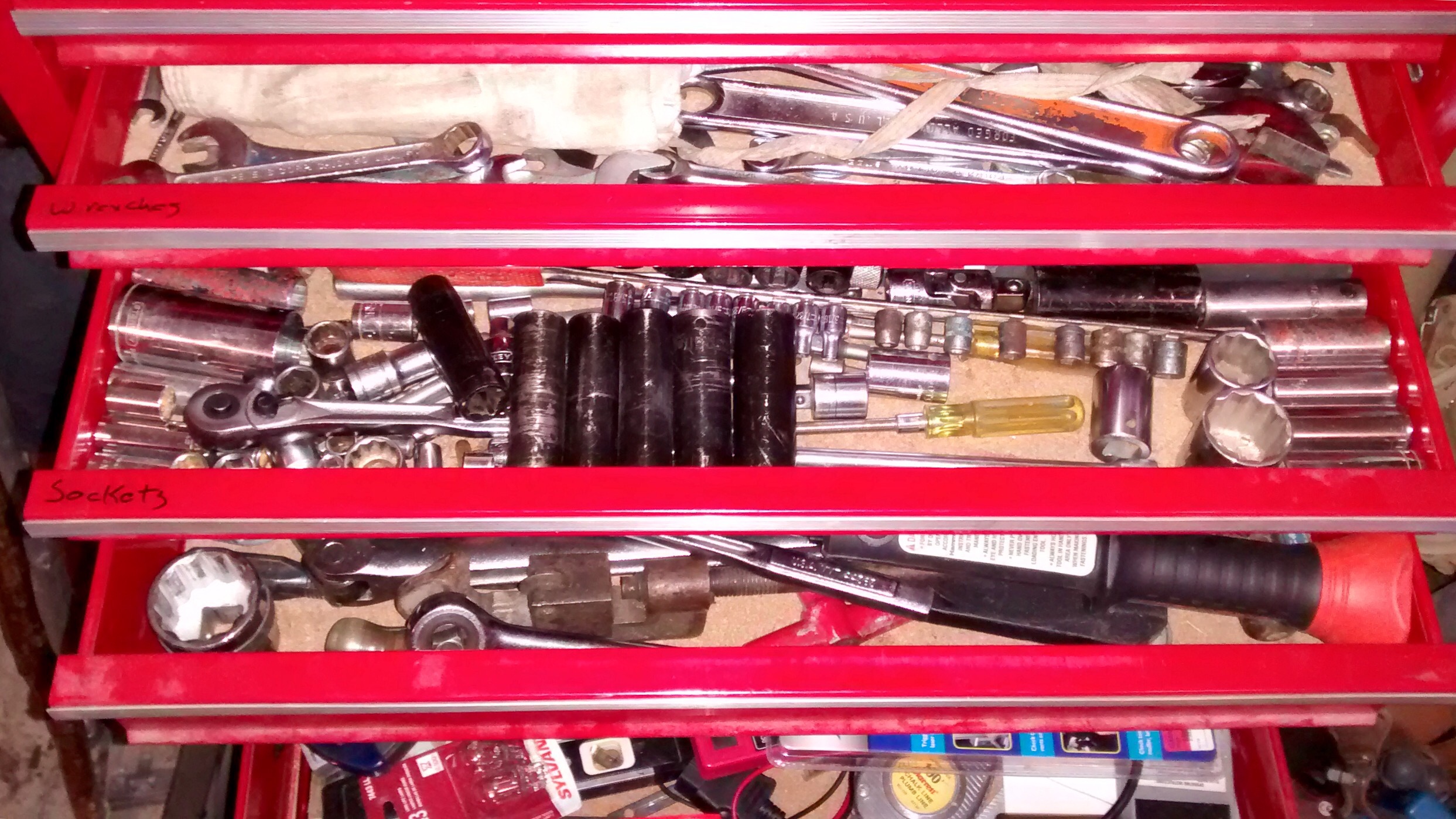
How long does it take to change your oil at one of the many speciality shops? Fifteen minutes? (Less if you say NO to the added services they try to sell you on.) For $50 and a quarter of an hour, you can get your oil changed and back on your way. How long do you think it would take to change it yourself? Well, first you have to get the oil. Then, you have to get a pan or a bucket to catch the old oil. Oh, and don’t forget the filter. Now, you’re ready to start. You need a wrench to take out the drain plug. (It’s not going to be 24mm. Probably 1/2″ or about 15mm.) Then, while the oil is draining you will need another wrench, called an oil filter wrench, to remove the oil filter. You might have a 1/2″ wrench, I’m guessing you don’t have an oil filter wrench. It doesn’t even look like a wrench. It looks like this.

Tracking down all that stuff and buying it? Nah, it’s quicker to just pay to have it done. Except that it takes me about 10 minutes and only the cost of the oil and filter. I’ve even started having my kids do it. How can we do it so cheaply? Easy – tools.
My point is that even if you how to change your oil. Even if you know the specific model number for the filter. Even if you know where the drain plug is located (it’s under the car just back of the engine slightly.) Even if you know all of that, you still need tools. And lacking the tools, the knowledge does you no good.
You know that annoying Check Engine light? Yeah, I used to think there was something magical about it. Something that only the mechanics who had been initiated into the Secret Greasy Wrench Society knew about. Nope. It’s just an indication that your engine has something to say. You can buy a code reader and check and clear those codes yourself.
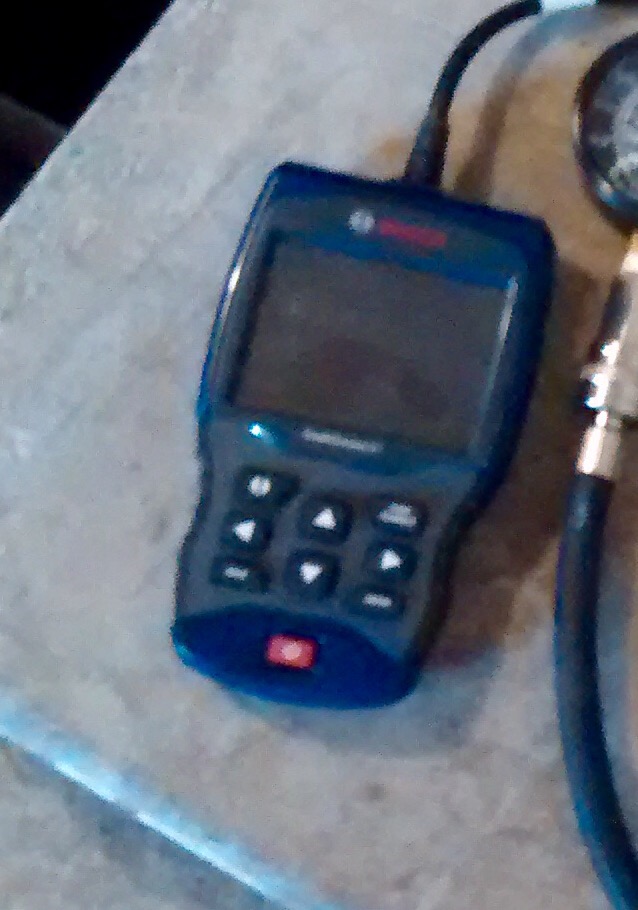
It’s canning season in Utah. We’be done applesauce, peach jam and more applesauce. Yesterday we picked concord grapes. Today, we are canning them. the process is simple.
- Wash the grapes
- Put them in a steamer
- Draw out the juice
- Put in canning jars in a steam canner for about 15 minutes
It’s simple. So, why don’t more people do it? Of course, there’s the question of where to get the grapes. (Thanks, Aunt Sharon!) But, once you have them, you need a steamer. In addition you need a bunch of canning jars. . .and rings. . .and lids. And then you need a steam canner. 
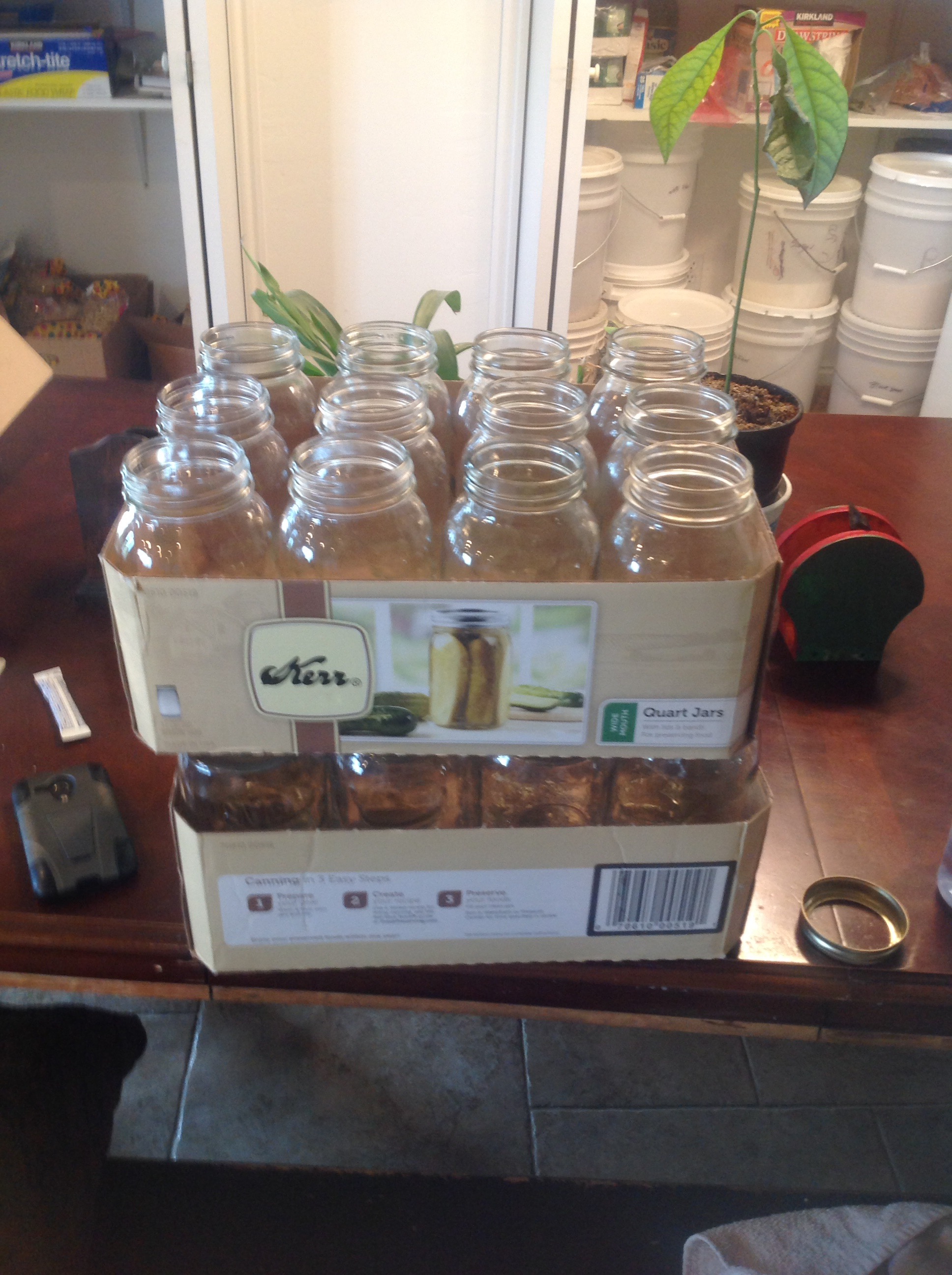
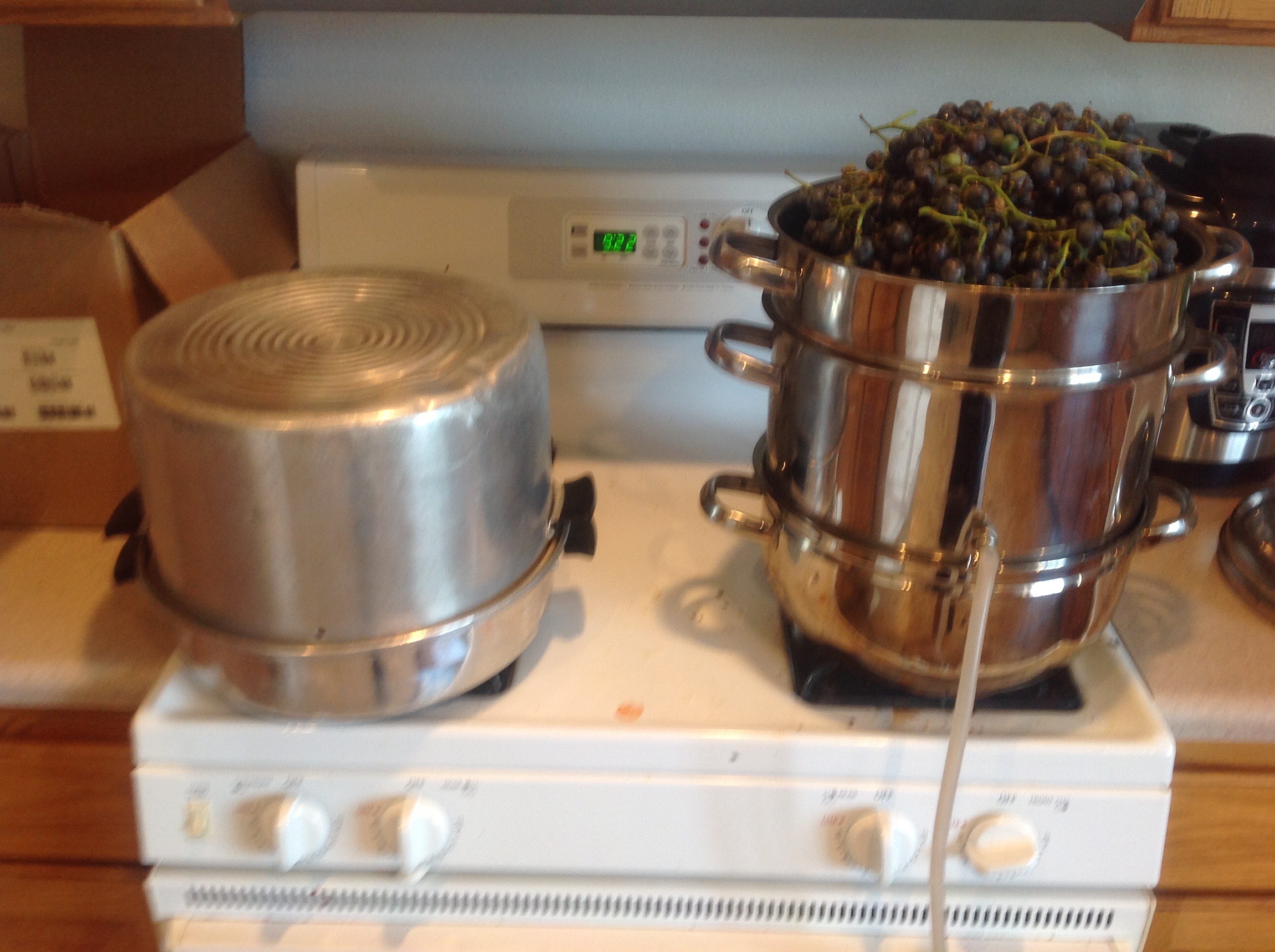
All for a couple of quarts of grape juice? No thanks. It’s way cheaper to buy it in the store. So, why do I can grape juice? The same reason I change my own oil and am rebuilding the engine on my Lexus. The same reason that your IT guy goes home and builds his own computer. Sure, he has the knowledge to do it. but, honestly, with youtube, everyone is 15 minutes away from being an expert. Find a video and they will walk you through the processBut, even if we get that knowledge, it’s the tools that make a difference.
A few years ago my wife said, “Why don’t you buy some fishing gear and take the kids fishing? ”
What are all of these WalMart charges? There’s like $150 worth?
Fishing gear.
I knew how to fish, but there are poles to buy. Bobbers and weights. Hooks and jigs. Powerbait and worms. Knives and hook removers. The tools needed to go fishing are important. Now when I want to take the kids fishing, we stop and get some worms and head for the river. It was expensive the first time. Now? Not as much. Why don’t more dad’s take their kids fishing? They lack the tools.
Every hobby, every profession has it’s own set of tools. Tools without knowledge are just shiny paperweights. Knowledge without tools is frustration. As frustrating as driving around with the Check Engine light on.
Rodney M Bliss is an author, columnist and IT Consultant. His blog updates every weekday. He lives in Pleasant Grove, UT with his lovely wife, thirteen children and grandchildren.
Follow him on
Twitter (@rodneymbliss)
Facebook (www.facebook.com/rbliss)
LinkedIn (www.LinkedIn.com/in/rbliss)
or email him at rbliss at msn dot com(c) 2016 Rodney M Bliss, all rights reserved

You probably already have trouble understanding your IT guys at times. They talk about things like DHCP, DNS, IP leases and even such obscure references as Honey Pots, cache, cookies, MAL ware, ransomware, and ARP cache poisoning. If you are like most people, you nod noncommittally and just hope they get your laptop back up and running without asking you to respond. But, at least they are speaking in what you assume is proper English.
Today, though, you came in to find the IT guys growling at each other and muttering,
Arrr, me hearties, any Service Tickets not submitted in Pirate-speak will be keelhauled and then forced to walk the plank!
They are not getting into their Captain Jack Sparrow Halloween costume a month early. They are simply participating in a long and cherished tradition. (Okay, it only goes back to 1995, but since that is before the IT guy was born, so it still counts.) Today, September 19th, is International Talk Like a Pirate Day.
Yes, it’s a real thing.
Michigan and California officially recognize International Talk Like A Pirate Day. Krispy Kreme and Long John Silvers have promotions for customers who come in and talk like a pirate today.
Google Search and Facebook allow you to select “Pirate” as your language of choice.
You might wonder how the world ended up with a day devoted to talking like a pirate. It’s not specifically an IT holiday, but it plays directly into the IT habit of adopting obscure references that allow us to keep end users slightly off balance.
International Talk Like a Pirate Day owes its existence to two friends, John Bauer and Mark Summers. They attribute its introduction to a racquetball game. One of them got injured and cried out “Aaarrr!” and a holiday was born. Actually, they didn’t start out to make it a holiday. They shared the joke among friends. Eventually, it got the attention of some people with national exposure and it sort of took off.
But, why September 19th? You might think that was the date of the infamous racquetball game. No. The game was played on June 6. However, there’s already a pretty important rememberance on that day and Baer and Summers didn’t want to mix their silly holiday with D-Day remembrances. They needed to pick a new day. They chose September 19th because it was easy for Summers to remember. That is his ex-wife’s birthday. I’m sure the former Mrs Summers appreciates the gesture. Or maybe she doesn’t and that’s part of the reason she is the “ex” Mrs Summers.
So, start your meetings today with a boistrous “Ahoy, Mateys!” and see how many people answer “Arrr!”
My only issue with the day is that since it is international Speak Like a Pirate Day, I think we should adopt a foreign accent and say,
Yes, of course this is a licensed copy of Windows!
That would truly be in the spirit of international piracy.
Rodney M Bliss is an author, columnist and IT Consultant. His blog updates every weekday. He lives in Pleasant Grove, UT with his lovely wife, thirteen children and grandchildren.
Follow him on
Twitter (@rodneymbliss)
Facebook (www.facebook.com/rbliss)
LinkedIn (www.LinkedIn.com/in/rbliss)
or email him at rbliss at msn dot com(c) 2016 Rodney M Bliss, all rights reserved
Have any luck?
Excuse me?
Were they biting?
The question took me off guard. I was hiking with our Boy Scouts. Well, honestly, they were somewhere far ahead of me on the trail. At least I assumed they still were. As the slowest hiker not only among the adults, but the boys as well, there was never any question who would play “sweeper” on our hikes.
People on the trail are friendly and share a common bond; a love of the outdoors; a willingness to strap on a pack and head up into the back country. Conversations come easily. I paused and stepped slightly aside to let the hikers going up hill pass by. And then I noticed their fishing poles. They must have noticed my own strapped to the outside of my backpack. Their question now made sense.
Nah. I drowned a few worms, but the fish won this round. I also tried rainbow PowerBait, but they pretty much ignored that too.
Sounds like most of my fishing trips to Long Lake. Well, good luck.
You, too.
I continued on down the mountain trail. The conversation could have taken place at any of a hundred different places I’ve fished. “How are the fish biting?” “What are you using for bait?” “Did you catch anything?”

This was the first boy scout trip I’d brought my fishing pole with me. Living, hiking and camping in Utah, water is a funny thing. Many of our camps are dry camps. Whatever water we need, we bring it ourselves. Other camps, like Kanarraville Falls are near streams, but they are either seasonal or just in an area without fish. Growing up in Washington, it’s strang to think of a stream or a river that has no fish in it. But, in the desert, it’s not uncommon.
The High Unintas, however, are overflowing with lakes. The trailhead we’d left from was at the intersection of three lakes, Washington, Trail Lake, and Crystal Lake. We camped at Long Lake and on Saturday hiked to Island Lake. All of those high Alpine lakes have fish.
I didn’t catch any of them.
But, that wasn’t the point.
Not all of my friends share my love of fishing.
You sit on the bank for hours and stare at the same section of water. And you might go all day and not even catch a single fish.
Well sure, but, where’s the downside?
If you go to a basketball game, you expect to see players score*. If you go to a hockey game, you expect to see a fight. If you go to a car race, you expect to see a crash. Fishing is different. If you go fishing with the expectation of catching a fish, you will be disappointed more often than not. The point of fishing is to fish, not to necessarily catch fish.
My dad said,
Any time spent fishing doesn’t count against your allotted time in life. If you are supposed to live for 80 years and you spend five years fishing, you’ll die at 85.
It’s an activity that forces you to slow down. It’s impossible to “hurry” fishing. If you cast out and then reel your line in too fast, you are even less likely to catch a fish. There’s a rhythm to fishing that few other activities can match.
My daughter’s boyfriend came with us on a family reunion at a lake in Washington a few years ago. After we’d been there a couple of days he approached me,
Would you like to go fishing tomorrow morning?
Sure. That’d be great.
My daughter overheard us,
Can I come?
No.
No.
Our responses were almost in unison. We both love fishing with her, but not this time. At then end of the hour or so we spent fishing, we’d caught a mess of fish and his title changed to being her fiance.
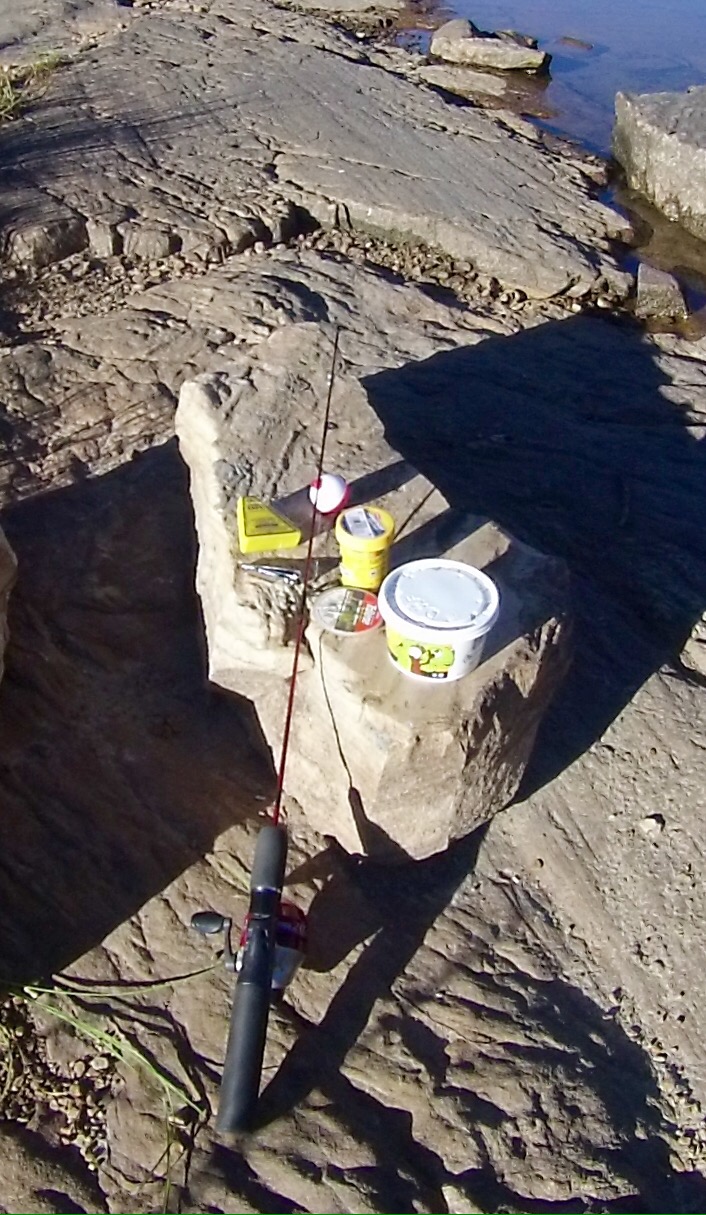
I only got to spend an hour of so fishing on our recent trip. As I told the guys on the trail, the fish won. I didn’t even get a bite. Some people might think I hauled all that gear up there for nothing. I feel sorry for those people. They obviously don’t fish.
(*If you go to a soccer game, you don’t expect to see much of anything. . .Soccer fans would love fishing.)
Rodney M Bliss is an author, columnist and IT Consultant. His blog updates every weekday. He lives in Pleasant Grove, UT with his lovely wife, thirteen children and grandchildren.
Follow him on
Twitter (@rodneymbliss)
Facebook (www.facebook.com/rbliss)
LinkedIn (www.LinkedIn.com/in/rbliss)
or email him at rbliss at msn dot com(c) 2016 Rodney M Bliss, all rights reserved
First it’s two minutes, then four, then six, then the next thing you know, we’re the U.S. mail.
– FedEx Manager Chuck Noland in “Castaway”
I stared at the scale and the number showing on its electronic readout: 210. The scale had to be wrong. There was no way I weighed 210 lbs. I’d never weighed more than about 160. . .well, maybe 170 after college. . .and I was 180 when I got fitted for a new suit. . .and. . .uh oh.
When hiking, the weight of your backpack should typically be 25% to 33% of your body weight. Not bad when you consider a 180 lbs man (I lost the weight here.) That’s 45 – 60 lbs. But, when you are a 70 lbs Boy Scout, it’s only 17.5 – 23 lbs.
Last night I met with our scout troop and talked about camping and backpacking. We had a backpacking trip last weekend. Most of the boys did great, a few of them struggled. In business we’d call this meeting the post mortem. (Interestingly that’s what a medical examiner would call it too.) The military would call it a debrief. We just called it “Wednesday night scouts.”
On a backpacking trip, weight becomes an important consideration. Serious backpackers will agonize over an extra ounce here or there. I’m not a serious backpacker. I do try to limit the weight. For example, I recently bought a new sleeping bag. It is much lighter than my previous bag.
The problem for me is the same problem that Tom Hanks’ character had in Castaway and the same problem I had when I gained 40 lbs unexpectedly; it’s the incremental things.
Should I bring an emergency rain poncho? Sure, that’s a good thing to have and it only weighs a couple of ounces. Well, when we did the Silver Lake hike, not all the boys had a rain poncho. Maybe I’ll throw in a couple extra.
Hand warmers? Sure, it’s going to get down to the 30s at night. . .And I’ll just throw in a couple of extra just in case.
Day pack? Yep. But, when we did Zions, Kragen didn’t have a day pack. I should throw in another one. It’s only an extra 3 oz.
Gloves? Sure, I might need them for warmth, but also they make excellent “oven mitts” for taking pots off stoves. Oh, and I should probably bring both my backpacking stoves. And this extra water is important. And. . .and . . And. . .
In project management we call this “scope creep.” Each additional feature by itself is worthwhile and the cost of implementing each new feature is minimal. And who doesn’t want to be the guy who says YES to his clients? But, the danger is very real. Without a strict effort to say NO and say it consistently and forcefully, a one day delay to add new features becomes two days. Two days becomes a week. A week drags on into a month.
How does a project get 6 months behind?
One day at a time.
The goal, in project management and in backpacking, is to include everything you need, but nothing you don’t. If it sounds impossible, it’s because it is. However, you can work on getting better. The most important skill is saying NO.
No to the extra serving of pie.
No to the 2 minute delay in your package delivery.
No to the extra gear in your backpack.
No to the really cool, but extra feature that wasn’t in the original spec.
Saying YES too often is what leads to being fat, lazy and slow.
Rodney M Bliss is an author, columnist and IT Consultant. His blog updates every weekday. He lives in Pleasant Grove, UT with his lovely wife, thirteen children and grandchildren.
Follow him on
Twitter (@rodneymbliss)
Facebook (www.facebook.com/rbliss)
LinkedIn (www.LinkedIn.com/in/rbliss)
or email him at rbliss at msn dot com(c) 2016 Rodney M Bliss, all rights reserved
Maybe I should have been more upset. Heaven knows I don’t have tremendous patience in other areas of my life. But, with these 12 and 13 year old scouters, I was fine going over things again, and again. . .and again. . .and again. Still, when you are hiking miles into the wilderness, there are certain things that are harder to correct for. When we camp at Anderson Park, here in my town of Pleasant Grove, UT, it’s easy to have a parent run by and replace a sleeping bag, or bring another pair of shoes. That’s a little harder when we are camping at Long Lake in the Uinta National Forest.
As I thought of the advice for the new scouts, I realized it was good advice for anyone deciding to head off into the great outdoors. So, here’s my open letter to the boys’ parents on preparing for a backpacking trip. (All names have been changed because this is my story. The boys can decide to tell their own later if they want.)
Shoes
Our Utah mountains are solid granite covered with a very thin layer of dirt. And the dirt moves around. Our trails are rocky. Often filled with boulders. During the hike we go over and around them. The proper shoes can make the trip easier or harder. I have five sons. We never bought them hiking boots. At 12 and 13 years old, they are still growing. Who wants to pay $100 for a set of hiking boots that will only be used a couple of times before they are too small?
Yes, your boys are going to wear tennis shoes and that’s okay. But, there are some recommendations. Larry had the “what’s old is new again” canvas, high-top Converse all stars. We used to call them chuck Conners. These are actually a good shoe for hiking. The high top design adds support to your ankles. . .except. . .
Larry, I don’t think you’ll trip as much if you lace up your shoes.
I can’t.
What do you mean?
I don’t think the laces actually work on these shoes. I think they are just for decoration.
Larry hiked six miles in tennis shoes that were unlaced. Slippers would have been more form fitting. Kelly’s shoes actually were like slippers. He had Vans. Also called “skateboard” shoes. They are slip on shoes without laces.
What to bring: Boots or tennis shoes that lace up.
What not to bring: slip on shoes, or shoes that don’t lace up. (Slippers are definitely out as well, although I’ve never seen them)
Hats
Hats fit into two categories: Day and Night. During the day, it’s a good idea to have some sort of hat with a brim. Especially on the hike we did last weekend, high altitude and Utah’s desert climate makes for some pretty intense sunlight. A hat not only protects from sunburn, but can help prevent heat exhaustion as well.
The nights at high altitude get cold. A stocking cap will greatly increase the efficiency of your sleeping bag. I keep mine tucked into my bag’s stuff sack so it’s always there.
What to bring: A hat for shade and a stocking cap
What not to bring: d I wouldn’t recommend a helmet, or a sombrero. But, so long as you are bringing something, it’s going to be better than not having a a hat.
<h2
Backpacks
We do two backpacking trips each year with the boys. In May we do what’s called “The Baldy Hike.” It’s about 13 miles and 8,000 feet in elevation change. (4K up and 4K down.) In September we do the High Uintas. About six miles and a couple thousand feet in elevation change. These are the only two hikes we need to pack in all our stuff: food, tents, sleeping bags, clothes, water (more on that below.) Backpacks are a very personal item. And unfortunately, also not particularly transferable. By that I mean that it’s hard to take a pack that will fit a 6′ tall, 180 lbs man and make it fit a 5’3″ 100 lbs boy.
On our last campout, my son took a day pack. He’s nearly 14 and he’s been camping dozens of times.
Are you sure you’ve got everything you need in that?
Yep. I’m going to sleep outside, and I’ve got my bag and a change of clothes.
He did fine. Kory also took just a day pack. Kory is 12 and has been camping with us just a couple of times. He couldn’t fit everything in his day pack, so he brought along a kitchen garbage bag stuffed with his pillow and a blanket. The kitchen garbage bag was as big as the pack. Kory struggled. After the first mile, I used some paracord to rig a harness around his garbage bag. He then slung it over his pack and hiked the rest of the way looking like a peddler with his pack high on his back.
Alton had a full sized backpack. But, it he had a terrible time getting his gear to stay in it. Several times, we stopped and reattached the bag holding his tent poles, or his sleeping bag. Unlike Kory, Alton’s backpack. was brand new. Well, not brand new.
Is that a new pack, Alton?
Oh, no. We bought it three months ago.
My backpack is 25 years old and I feel like it’s just getting broken in.
What to bring: Backpacks, either internal or external frame. The boys should be familiar with their pack and how it fits.
What not to bring: Fullsized pillows are definitely out. As is brand new gear. You don’t want the first time you use it to be on a wilderness camp.
Tents
Alton’s backpack was not the only gear he had that was new. We arrived at our campsite about 30 minutes before dark. We quickly set the boys to pitching their tents. It’s a lot more fun setting up a tent in daylight than trying to do it by the light of a head lamp. Most tents have a similar configuration. Each one is slightly different, but they almost all follow a similar pattern.
Since this was a backpacking trip, the boys had teamed up on their tents. Typically two, sometimes three boys per tent. That way, they shared in the task of hauling the tent. Alton was working with Kramer to set up his tent. It wasn’t going well. The tent was brand new. Alton had never set it up before. And, of course Kramer wasn’t familiar with it. I wandered by and gave some encouragement. And they finally got all the poles in the right places and climbed inside to start setting up their sleeping bags.
I looked at Alton through the mesh screen on the top of his tent.
You should put on the rain fly. It will be cold tonight and it will help keep the heat in your tent.
We don’t have a rain fly.This is how the tent is supposed to look.
I’m pretty sure there’s a rain fly. The fact that I can see you from the outside of your tent shows that there is supposed to be more to it. It will look like a big piece of nylon.
He found the rain fly and when the temperature dipped, he was glad he had used it.
What to bring: Tents that are not too heavy. Split up the weight between multiple people. Typically, one person carries the poles and the other carries the tent.
What not to bring: You should not bring a tent that you’ve never set up before. Also avoid tents that are too big, or too heavy. A good one-man tent weighs about 4 lbs. Double that for a two man.
Food
Typically, on our campouts, we supply instant oatmeal and hot chocolate for breakfast. The boys are on their own for the rest of the food. You would think that Ramen noodles, or Cup O’ Noodles would be great choices. They are quick and easy to fix. You would be wrong. The problem with noodles is that they just don’t provide enough calories. A package of Top Ramen includes two servings, each of which is 190 calories. During a hiking trip, it’s not unusual for boys to expend 3000 or 4000 calories. Our most ambitious trip, the Baldy hike, probably burns about 5000 calories. Ramen noodles just don’t provide enough energy.
It’s hard to ask parents to go and buy expensive freeze dried meals for a hike. And yet, those meals are specifically designed to provide the amount of energy needed for hiking all day.
The problem with not eating enough calories doesn’t show up at the meal. The boys may be full and feel satisfied. It’s the next day that the problem shows up. After the body consumes all the available energy from the food they’ve eaten, it goes looking for additional energy. Typically it will take it out of fat or muscle. None of our 12 year olds are very fat. That means at the end of the hike, when they are already tired, they will also be nearly drained of energy. We’ve become much more conscious of what the boys are eating, especially on these hiking trips.
What to bring: High energy foods that include complex carbohydrates. They don’t have to have freeze dried meals, but their meals should be substantive. Oats, grains, proteins.
What not to bring: Avoid food that is high in sugar or low in calories. Skip the noodles.
Water
Our campouts are typically only one night. We are out in the wilderness for less than 24 hours most times. So, we can survive a boy forgetting a tent, or the proper food, or even poor shoes. The one thing we cannot survive without is enough water. Camping in the desert, we are constantly aware of water, how much we have, how much we need, where to get more. It becomes especially important on a high altitude hike. The Uintas are in the 10,000 foot range. The peaks are higher, but even the hiking trails are two miles avove sea level. At that altitude, a couple of things happen. First, the sun is more intense. Ironically, it doesn’t translate into hotter temperatures, because the altitude and the wind keep it mild. But the sun is blazing away. Also, the air is very, very dry. That means that as your body sweats, the sweat almost immediately evaporates. This also tends to make you feel cooler. As you breath dry air, you also lose moisture. You are pulling in bone dry air and breathing out moist breath. Really what it means is that you lose a lot more moisture than you do at lower levels and a you don’t notice it as much.
I have a friend who runs ultra marathons. You might have seen him in the news. He’s a firefighter who runs regular marathons in full firefighter gear. He also runs 100 mile races for fun. I asked him about keeping hydrated.
You have to start early. If you wait until you feel thirsty, you can never get enough fluids into your body to make up the difference.
We have a similar issue when we are hiking. We are constantly reminding the boys to drink more water. As we were headed back down the trail to the parking lot, I noticed that Kurtis was looking more tired than normal.
Do you have a water bottle?
Yeah.
Where is it?
It’s in the bottom of my backpack.
I just shook my head and pulled out my “emergency” water bottle.
Here, drink half of this right now.
But, I’m not thirsty.
I don’t care. Drink down to there.
What to bring: The boys need to bring water bottles that are accessible. They should plan on drinking 1-2 quarts per day when it’s mild and up to a gallon per day when it’s hot and we are hiking.
What not to bring: Don’t bring a water bottle that is too small, or that can’t be attached to the outside of their pack.
I never tire of teaching boys how to not just survive, but enjoy their time in the wilderness. It’s not a skill that we are born with. Just a little forethought can mean the difference between a great experience and a miserable one.
Rodney M Bliss is an author, columnist and IT Consultant. His blog updates every weekday. He lives in Pleasant Grove, UT with his lovely wife, thirteen children and grandchildren.
Follow him on
Twitter (@rodneymbliss)
Facebook (www.facebook.com/rbliss)
LinkedIn (www.LinkedIn.com/in/rbliss)
or email him at rbliss at msn dot com(c) 2016 Rodney M Bliss, all rights reserved
Mr Mickelson, my 5th grade teacher walked to the drinking fountain in our classroom at Lakes Elementary. He took a drink of water and then walked back to the front of the class.
What I’ve just done can never be repeated. Even if I try to exactly retrace my steps, you will have moved. The planet has moved. In fact, there are countless things that will never again be aligned as they were at the exact moment I took that drink.
After 40 years, I have no idea what lesson he was teaching. But, I remember the lesson I took from it.
You can’t go home again.
Even if you physically go to the house, the people are different. The time is different. You are different. It’s constantly changing. And thereby being new again.
And yet, the ancient Isrealite King Soloman tell us,
There’s nothing new under the sun.
Ecclesiastes 1:9
So, which is it? Is every moment new or is nothing new?
Last weekend I took a backpacking trip through Utah’s High Unita mountains. The views were spectacular. The trailhead is about 40 miles east of Salt Lake City. It’s 25 miles from Kamas, the nearest town. From the trailhead we hiked two miles to Long Lake. “Remote” is a pretty good description. It’s easy, hiking through the pines and over the granite mountains, to imagine what it was like for the first people to walk these trails.

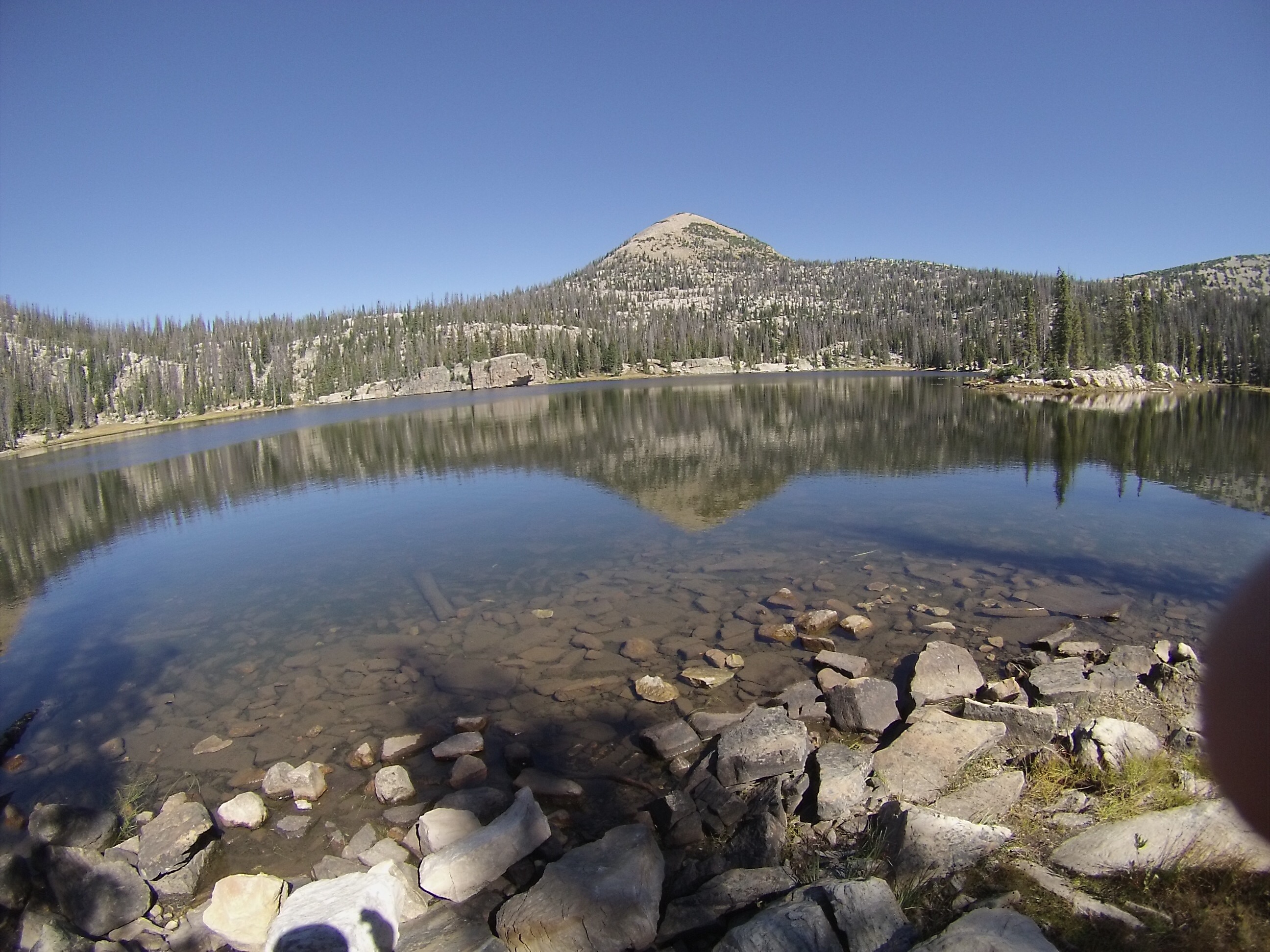

And yet, the trail that we are hiking isn’t a natural trail. Everywhere is evidence that it was purposefully built. It has steps cut in to climb over the rocks. It has rocks strategically placed to funnel runoff away from the trail to avoid washouts. It had trail markers. There’s even an elevation marker at the highest elevation: Mount Watson, 11, 527 feet above sea level.
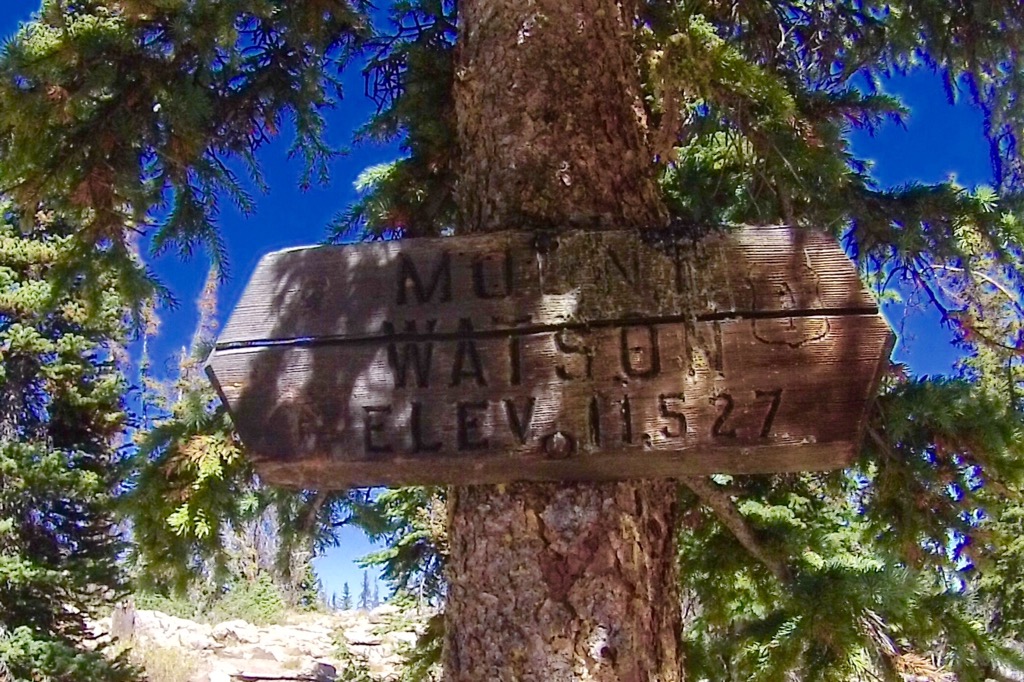

The feeling of being the first to see it is illusionary. And before the trail makers, were the early explorers. Before them were the Native Americans. The spot I’m standing on; the view that I’m enjoying, has been enjoyed countless times before. I’m neither the first nor the last. I’m simply one more in a long line of people willing to brave the elevation to enjoy this view. It doesnt’ diminish the view. It doesn’t even diminish the pleasure. How selfish would it be to crave exclusive access to this beautiful area?
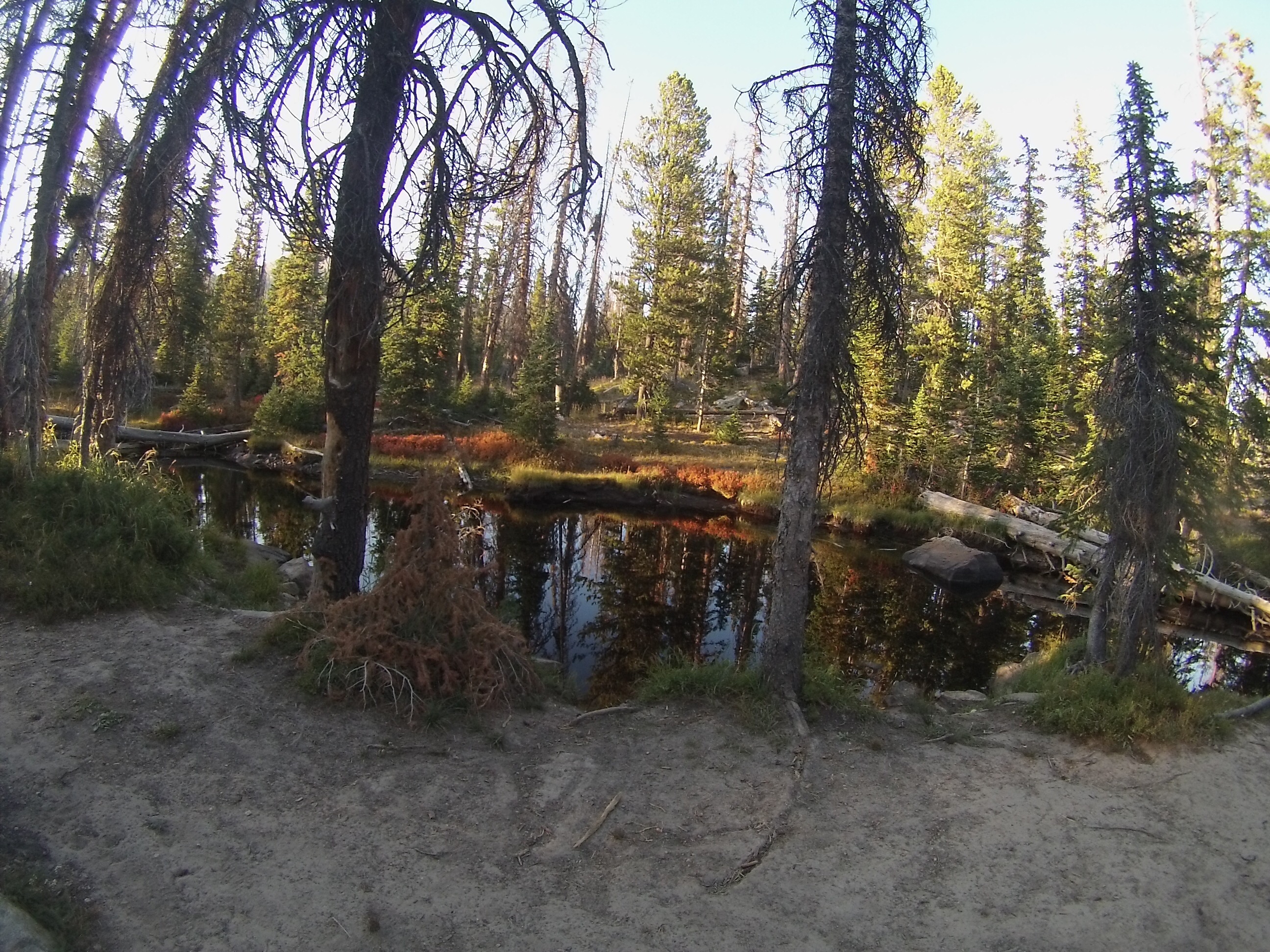
So, there is nothing new. None of us truly get to be “the first”?
Not quite.
I went and picked peaches yesterday. It’s the season in Utah. We told the kids that if they would pick for 10 minutes, we’d then go out for ice cream as a family. Here’s one of the peaches.

And here is the opportunity to truly be a pioneer. No one else has EVER seen the inside of this peach.

I’m the first (And since I’m eating it right after posting this, I’ll be the last.) Each time you crack an egg, cut open an apple, or slice up a watermelon, you are the very first to see that sight.
Food is easy. People are hard. You’ll meet someone today that you’ve never met before. You won’t be the first person to meet them. . .well, unless you’re a doctor delivering a baby. In that case, wish the parents congratulations. For the rest of us, we are simply one more in a long line of people that will interact with that person. And for you, it’s the very first time. How will that person remember you? Perhaps they won’t even think of you at all. We all pass hundreds (thousands?) of people on the freeway daily. The goal is to be unmemorable.
But, what about the checker at the grocery store? The server in the restaurant? The flight attendant? You have the opportunity to shape that first, and perhaps only encounter. Make it a good impression. Even with members of your family, like my 5th grade teacher explained, you can never reproduce, or recapture the next interaction you have with them. You are really meeting everyone for the first time. Make it a good meeting. What you’ve done will never again be able to be repeated.
(After the signature block is the entire passage from Soloman’s poem in Eccesiastes Chapter 1.)
Rodney M Bliss is an author, columnist and IT Consultant. His blog updates every weekday. He lives in Pleasant Grove, UT with his lovely wife, thirteen children and grandchildren.
Follow him on
Twitter (@rodneymbliss)
Facebook (www.facebook.com/rbliss)
LinkedIn (www.LinkedIn.com/in/rbliss)
or email him at rbliss at msn dot com(c) 2016 Rodney M Bliss, all rights reserved
_________________________________
One generation passeth away,
And another generation cometh:
But the earth abideth for ever.The sun also ariseth,
And the sun goeth down,
And hasteth to his place where he arose.The wind goeth toward the south,
And turneth about unto the north;
It whirleth about continually,
And the wind returneth again according to his circuits.All the rivers run into the sea;
Yet the sea is not full;
Unto the place from whence the rivers come,
Thither they return again.All things are full of labour;
Man cannot utter it:
The eye is not satisfied with seeing,
Nor the ear filled with hearing.The thing that hath been,
It is that which shall be;
And that which is done is that which shall be done:
And there is no new thing under the sun.Is there any thing whereof it may be said,
See, this is new?
It hath been already of old time, which was before us.Ecclesiastes 1:4-10
Typically, the test goes like this: a team of researchers drops a wallet on the sidewalk. Then, they watch to see what people will do. Do they take the money? Do they look to return it? Or, do they simply ignore it? Readers digest did the test a few years ago in cities all around the world. Most honest? Helsinki, Finland, where 11 of the 12 wallets they dropped were eventually returned. If you want to know who was least honest, the story is here.
Over the weekend, I had my own version of the lost wallet test. Except it wasn’t a wallet it was a #10 can with a $100 water filter in it. And the test wasn’t entirely on purpose. I took a group of boys hiking in the area of Utah’s Rocky Mountains called the High Unitas.
The Unitas are located about 40 miles east of Salt Lake City. The landscape is beautiful. High mountain lakes and Alpine forests.

This is one of the two hiking campouts we do each year. We start from the Crystal Lake trailhead. Then, we do a two mile hike to Long Lake where we camp. It’s a moderately difficult hike, but many of our boys are recently turned 12 years old. It’s a challenge for them.
The number one concern on any Utah camping trip is water. Even though we were camping next to a lake, we still had to be very conscious of how much water we had. A gallon of water weighs 8 lbs. That’s not too much if you are carrying it from the car to the garage, but it becomes very important when you are thinking about walking for 2 miles at 10,000 feet elevation. A backpack should be between 25%-33% of the hiker’s body weight. Many of our scouts weigh less than 100 lbs. That puts their pack -weight goal at 25 to 33 lbs. They need to bring sleeping bags, pads, food, tent, and any other gear and make it fit in less than 33 lbs. A gallon of water would be almost a quarter of their total weight allowance.
Instead of loading them down with water, we have them bring enough for the hike and then we bring water filters for additional water. (Boiling water to purify it is largely ineffective above 10,000 feet. The water temperature is too low.)
And that’s where I had a problem on Friday. I had the water filter. And I put it in a #10 can for three reasons. First it make it very accessible. Second, I had to bring the can anyway to boil water in. Finally, I could have boys take turns carrying the extra weight. The can had green paracord strung through two holes as a handle.
On our hike, I had the boys take turns carrying the can. Toward the end of the hike, as they became tired, it fell to me to carry it the rest of the way. We arrived at our campsite about 30 minutes before sundown. Although the boys were tired, we immediately set them to work setting up tents. It’s a lot more fun to set up a tent in daylight then in darkness. As the boys got their tents set up, they moved on to dinner preparation. Dinner consisted of freeze dried meals. “Cooking” was a matter of boiling water and adding it in.
Rodney, the boys drank all their water during the hike. Do you have the water filter?
Sure. It’s right. . .Uh oh.
What?
I think I left it back up the trail.
I think we have enough for dinner. We can get go back for it in the morning.
I was a little worried. It was a pretty expensive filter. And in an environment where water=life, it was even more valuable. But, then I looked around the lake. We were one of three groups camping around the shore. There were probably less than a dozen people in an area of 50 square miles. I could wait.
The following morning I was up before the sun. I’ve always been a morning person. There is nothing quite like a sunrise over a ridge line in a quiet mountain meadow. I didn’t immediately head back up the trail. I could see fish jumping and I’d carried up a fishing pole. I devoted an hour to drowning worms and being outsmarted by the trout.
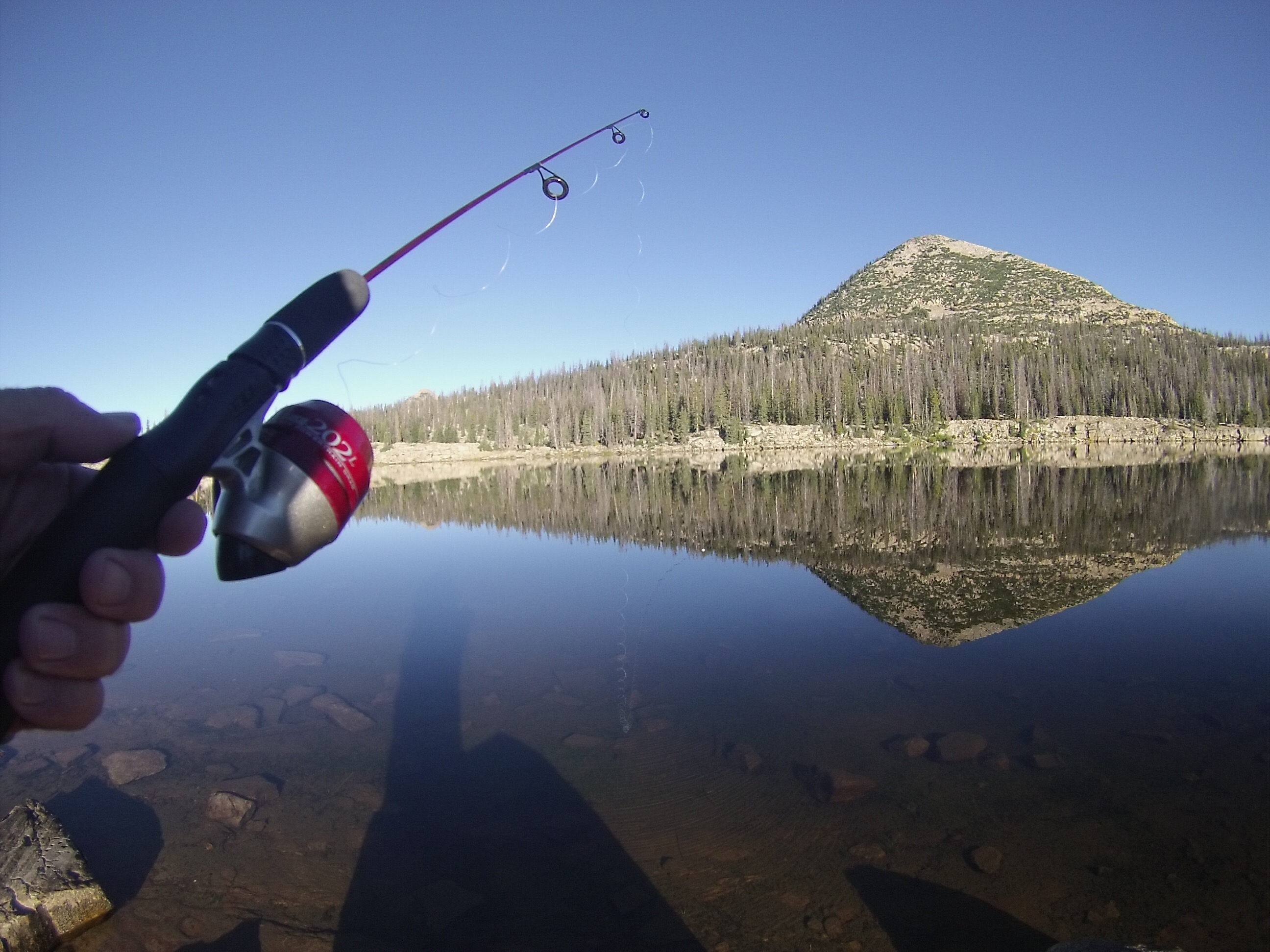
As the boys started to stumble out of their tents, and those who’d opted to sleep under the stars crawled out from under their tarp, I put away my fishing gear and headed up the trail. I thought I knew about where I’d left it. The hike was pleasant. The weather would warm to the low 80’s later in the day, but the morning was still on the cool side. Despite, the calendar saying it was early September, the overnight temperatures had been close to freezing.
As I hiked, I looked at the prints in the dusty trail. So far, all were pointed back the way I’d come. That meant no one had left our valley overnight. I was worried about my water filter wandering back toward the trailhead and finding a new home. As I rounded a bend in the trail, I met a pair of hikers who by the look of their packs were out for a day hike.
Say, did you guys see a #10 can with a green rope handle on the side of the trail?
Yeah, it’s just back up the trail a ways.
Whew. That was a relief. First, that I was close. Second that it hadn’t disappeared. Five minutes later I met another pair of hikers.
Did you see a can with a green handle?
Yes, it’s just back around that bend in the trail there.
Thanks.
And there it was. The can was there in the exact spot I’d left it.
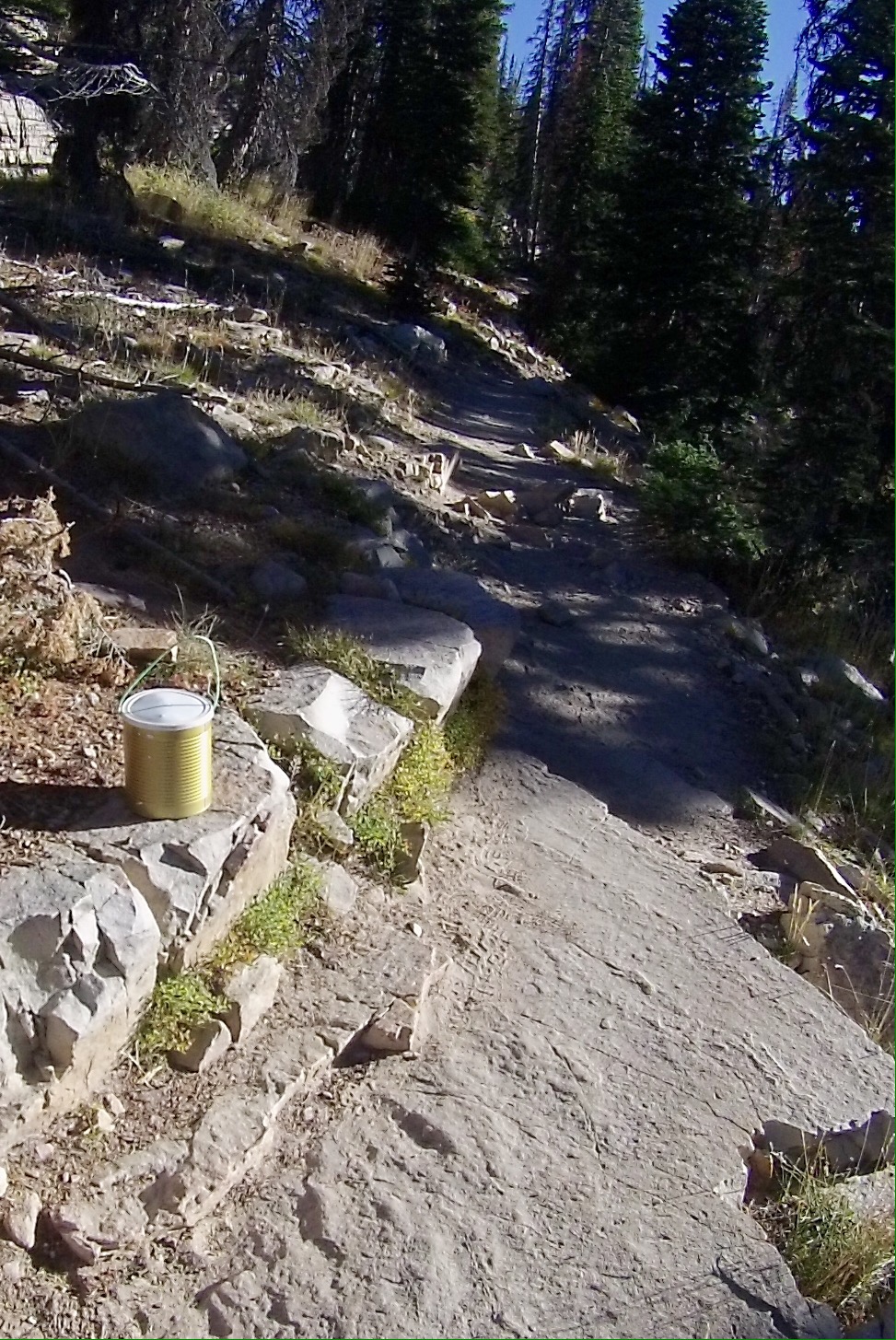
Inside was not only the water filter, but a stove I’d packed as well. It was a huge relief. I picked it up and turned back for camp. As I did, I considered what just happened. The hikers had noticed the can. Maybe they’d even opened it. But, they had put it back where it was and left it for the owner to return.
When Readers Digest did their wallet-test, the “right” response was for people to return the wallet. In the wilderness there was really no one to return it to. The right response was to just leave the can where it was. I felt slightly guilty for my worry that someone would steal it. It’s not unusual for people to leave thousands of dollars worth of camping gear at their campsite while they go off and hike. The camping community, especially those who are willing to climb into the back countr,y is a pretty honest bunch. I’m guessing they would pass the wallet test nearly every time. Although they would pass it not by returning the wallet, but simply leaving it on the side of the trail for the owner to return.
My favorite version of this story was one where researchers left money on the dashboard of a car. After the experiment, they confronted a homeless man who had taken the cash.
I just want the money back.
I don’t have it.
Sure, you do, I watched you take it off the dash.
I moved it to your glove compartment. This is a bad neighborhood, you shouldn’t leave cash laying around.
Pretty sure, he would have simply ignored my lost water filter too.
Rodney M Bliss is an author, columnist and IT Consultant. His blog updates every weekday at 7:00 AM Mountain Time. He lives in Pleasant Grove, UT with his lovely wife, thirteen children and grandchildren.
Follow him on
Twitter (@rodneymbliss)
Facebook (www.facebook.com/rbliss)
LinkedIn (www.LinkedIn.com/in/rbliss)
or email him at rbliss at msn dot com(c) 2016 Rodney M Bliss, all rights reserved
The train rumbled to a stop at the American Fork Frontrunner station. I waited with the rest of the early morning commuters to make my way onto the bright shiny double-decker commuter cars. Even though American Fork is only the second stop on the Northbound line, most of the tables in the upper deck are typically claimed before I get on.
“Table” is perhaps too strong a word. The surface is barely large enough to hold a laptop. With four seats facing it, even if I got a seat by one of the tables chances are there won’t be room for my iPad and wireless keyboard. The seats are narrow and close to one another, nearly knee-to-knee with the person sitting across from you. As I step onto the train, I glance yet again at the strange car that sits just behind the engine at the North end of the train.

Where the commuter cars are two levels, with large windows and lots of light, this car is a single level. It’s windows are small and too dark to see inside. I’ve always been curious what the car is used for. Was it for the train crew? Seems odd for a commuter train. Equipment? Maybe it’s a baggage car. Except, no one takes baggage on a commuter train. I’m tempted to go and look, but since the train only stops for a few minutes at each station, I’m worried,I’d miss the train while satisfying my curiousity.
While I enjoy riding the train, a commuter train is crowded. Going to work there are plenty of seats at my stop. Although by the time we reach the Murray stop, where I get off, the train is nearly standing room only. The trip home, is worse. Murray is the first Southbound stop after the train leaves downtown Salt Lake City. It’s typically crowded. I can find a seat, but again, I’m cheek by jowl with my fellow passengers.
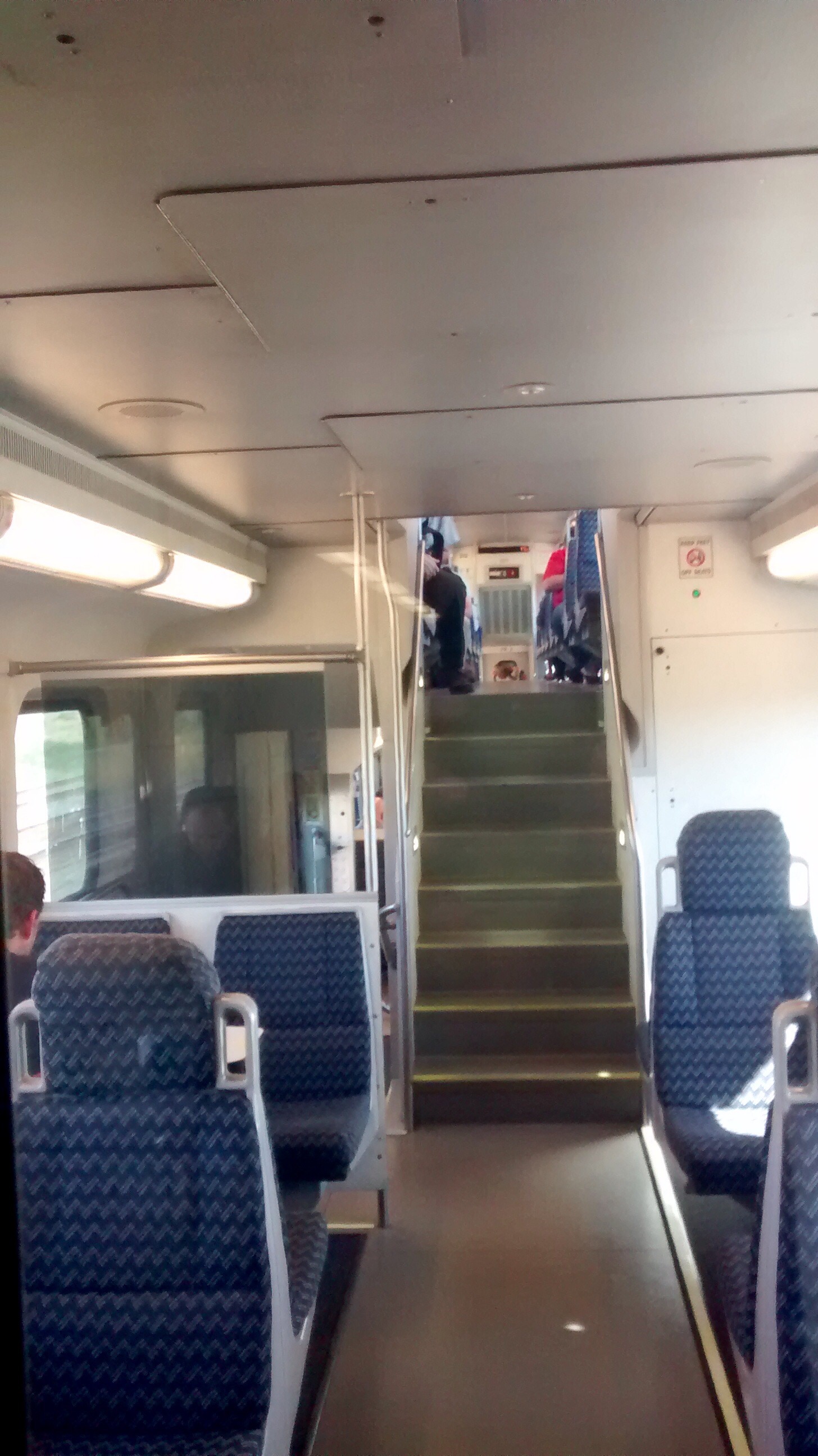
A few days ago I decided to try something different. I noticed a line forming for the baggage car. The train always stops so that the doors are at the same location on the platform. Some office workers, clearly on their way home, were lined up waiting to board what I had been thinking of as the baggage car. What did I have to lose? If there was a problem getting on that car, the people in front of me would have to deal with it too. For once, “going along with the crowd” seemed like a good strategy.
Whereas getting on the commuter cars was simply walking on, the baggage car had a set of steep steps followed by a seperate door at the top. The people in front of me dutifully climbed the three stairs, slip open the door and stepped back into an earlier time.
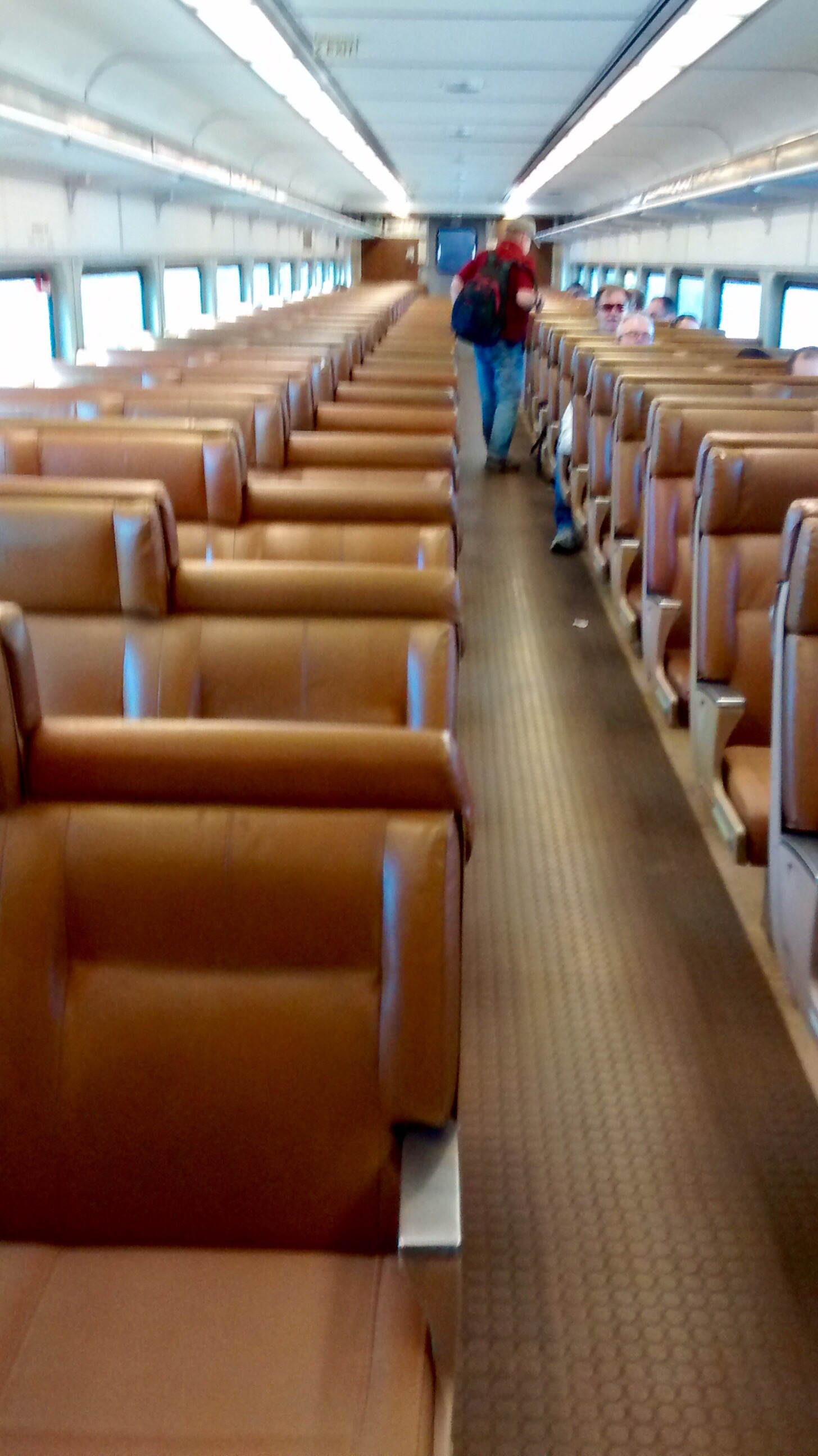
The baggage car wasn’t actually a baggage car, of course. It was an old train car. The small windows showed the spider cracks from years of Utah’s unrelenting sun and desert wind. There was literally a luggage rack above the seats. And the seats themselves, instead of the pre-formed, squished, hard plastic of the commuter cars, were wide, soft, high-backed bench seats. Instead of knee-to-knee configurations, they were all facing the same way. And instead of being squeezed together with the other commuters, there was plenty of room in the baggage car.
I made my way to an empty seat and relaxed into the faux leather softness. As I thought about the differences, I noticed something about the station platform I had just stepped off of. The platform was built on two levels. The South end of the platform was about a foot higher than the North end. I’d never considered it before. Or if I had, it was simply to chaulk it up to making the platform more wheelchair friendly.
Now, I realized why the baggage car was always at the North end of the train. It’s steps ended closer to the ground than the newer commuter cars. I wondered how many people, like me, were cramming themselves into the commuter cars while wondering about the “baggage” car? How often do we miss out on a better experience simply because we get stuck in our comfort zone? In this case, my comfort zone wasn’t even the most comfortable option.
I now line up with the rest of the people to climb the steps and ride in the baggage car. It’s much more comfortable than the commuter cars.
Rodney M Bliss is an author, columnist and IT Consultant. His blog updates every weekday at 7:00 AM Mountain Time. He lives in Pleasant Grove, UT with his lovely wife, thirteen children and grandchildren.
Follow him on
Twitter (@rodneymbliss)
Facebook (www.facebook.com/rbliss)
LinkedIn (www.LinkedIn.com/in/rbliss)
or email him at rbliss at msn dot com(c) 2016 Rodney M Bliss, all rights reserved
Coming Soon: “Silk Road Memoir – A Story of Crime, Greed and Murder”
Curtis Green was dead, murdered to prevent him sharing what he knew about Silk Road, a Dark Web site where you could buy and sell drugs. Curtis Green was an admin on the site. He worked for D.P.R. That’s the Dread Pirate Roberts. No, not the one of Princess Bride fame. Wesley made his fortune in gold. Silk Road traded in a currency called Bit Coin. The story of Silk Road reads like a fiction story. Curtis Green, back from the dead, is going to share his story in a coming book.
Watch the teaser here.
My friend, award winning author Dave Farland is helping Curtis bring his story to light now that the legal issues that were keeping him quiet are largely resolved. I’ll let Dave explain.
The Headlines are Only Half the Story
You may have heard about the Silk Road scandal in Time magazine, Wired magazine, or any of a hundred other places.
Curtis Green took a job working for a company called Silk Road, where (unknown to Curtis) his boss, nicknamed “Dread Pirate Roberts,” was trafficking drugs over the internet.When the FBI and the DEA got wind of it, they set Curtis up in a sting operation, staging a drug bust using planted evidence.
When Curtis’s boss found out about it, he hired a hit man to cover his trail, but the FBI found out about it and staged Curtis’s assassination. The Dread Pirate Roberts got two life sentences for his crimes, but the story wasn’t over.
The FBI and DEA agents that were investigating the crimes decided to steal millions from Silk Road. Now they’re also in prison.Curtis wants to tell his story and clear his name. Due to legal issues, he hasn’t been able to talk or write about what happened–until now. As you can imagine, the legal bills were staggering. So I’ve agreed to help him start a fundraiser so that he can pay for some basic help on the writing and editing of his amazing autobiography. We’ll be kicking the fundraiser off Theis week, offering exciting gifts and prizes.
Thank you in advance for your help and consideration.
David Farland
The Silk Road story fits perfectly in the intersection of computers and business. Bit Coins introduce a whole new way that companies can do business. It’s alway a way for crooks to steal. While your business isn’t selling drugs on the internet, Curtis Green provides a lesson for all IT administrators. If all we do is keep the computers running, are we selling drugs? What if I don’t know what is happening over that computer link? Am I an innocent bystander, or am I the bookkeeper of Auschwitz?
What happens when the cops, also versed in computer skills, use those skills to steal the new electronic currency?
I’ll be helping Dave and Curtis bring their story to light by helping spread the word. You can follow the story on David Farland’s web site My Story Doctor.
Rodney M Bliss is an author, columnist and IT Consultant. His blog updates every weekday at 7:00 AM Mountain Time. He lives in Pleasant Grove, UT with his lovely wife, thirteen children and grandchildren.
Follow him on
Twitter (@rodneymbliss)
Facebook (www.facebook.com/rbliss)
LinkedIn (www.LinkedIn.com/in/rbliss)
or email him at rbliss at msn dot com(c) 2016 Rodney M Bliss, all rights reserved

